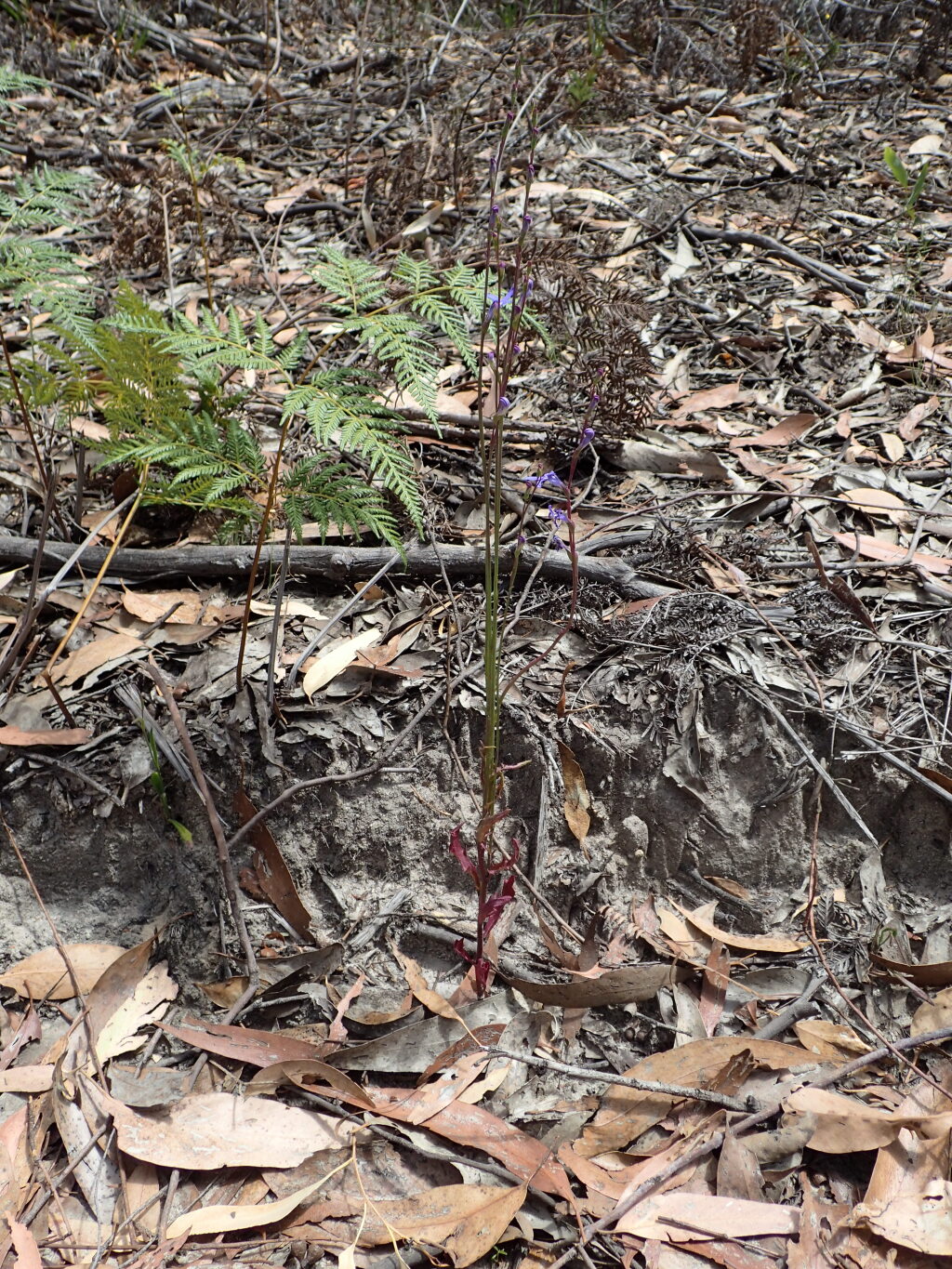Lobelia simplicicaulis
R.Br.Erect, glabrous or sparsely papillose annual, c. 15–90 cm high; stems solitary or several from near base, frequently red-tinged at least towards base. Leaves, oblanceolate to c. elliptic, 6–60 mm long, 2–15 mm wide, coarsely toothed to pinnately lobed (but reducing and c. entire up stem), sometimes red-tinged; petiole absent or indistinct. Flowers bisexual, in terminal and sometimes axillary 4–12-flowered racemes; pedicels 3–20(–25) mm long, glabrous or sparsely papillose. Calyx-lobes 2–5 mm long, entire; corolla 2-lipped, 13–28 mm long, dark blue, rarely white, upper 2 lobes short, strongly recurved, lower 3 lobes spreading, oblanceolate to oblong, central lobe longest, 5–15 mm long, 1–6 mm wide, usually obtuse and apiculate, lateral lobes falcate, tube 5–13 mm long, split virtually to base, internally glabrous, papillose or minutely pubescent towards base; filaments 3.5–8 mm long, anther tube 1.8–3.3 mm long. Capsule broadly and obliquely obovoid, c. 7–15 mm long; seeds c. ellipsoid, strongly 3-angled, 0.45–0.7 mm long, brown, smooth. Flowers mostly Oct.–Mar.
LoM, Wim, VVP, GipP, OtP, WaP, Gold, CVU, GGr, DunT, NIS, EGL, EGU, WPro, HSF, HNF, OtR, Strz, MonT, HFE, VAlp. Also SA, NSW, Tas. Widespread, but often ephemeral after fire or other disturbance, mostly collected from tall wet forest but occasionally occurring in lower, drier forest types.
With respect to inflorescence type and leaf margins this species resembles Lobelia browniana and L. dentata. It can be distinguished from the former in having longer corollas and filaments, and different seeds. From L. dentata (with which it is partly sympatric) it differs in the larger 3-angled seeds, larger, less gibbous (asymmetric) capsules, and leaves that have longer, usually more spreading (rather than ascending) teeth or lobes.
Albrecht, D.E.; Walsh, N.G. (1999). Campanulaceae. In: Walsh, N.G.; Entwisle, T.J., Flora of Victoria Vol. 4, Cornaceae to Asteraceae, pp. 553–553. Inkata Press, Melbourne.
 Spinning
Spinning

